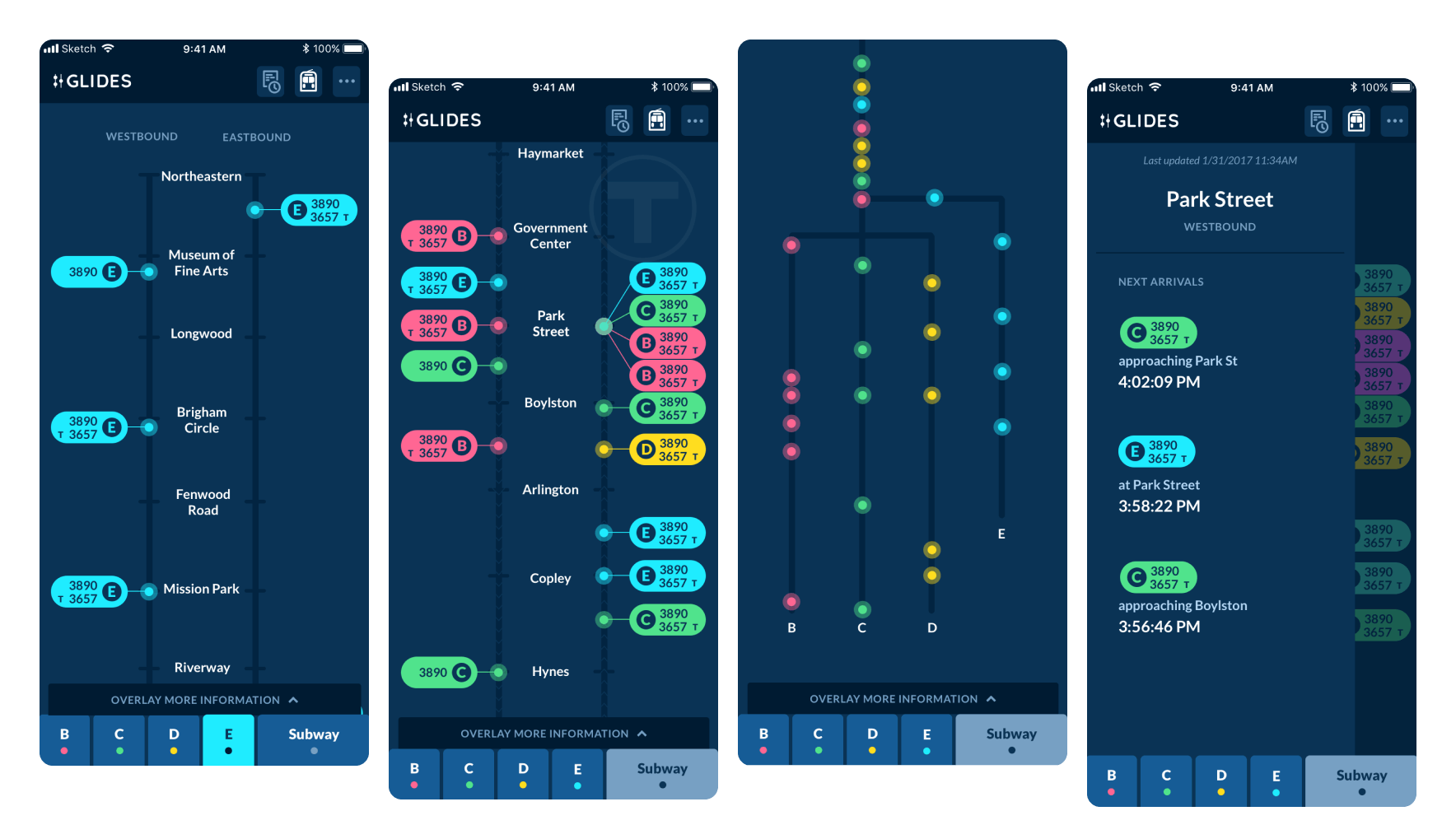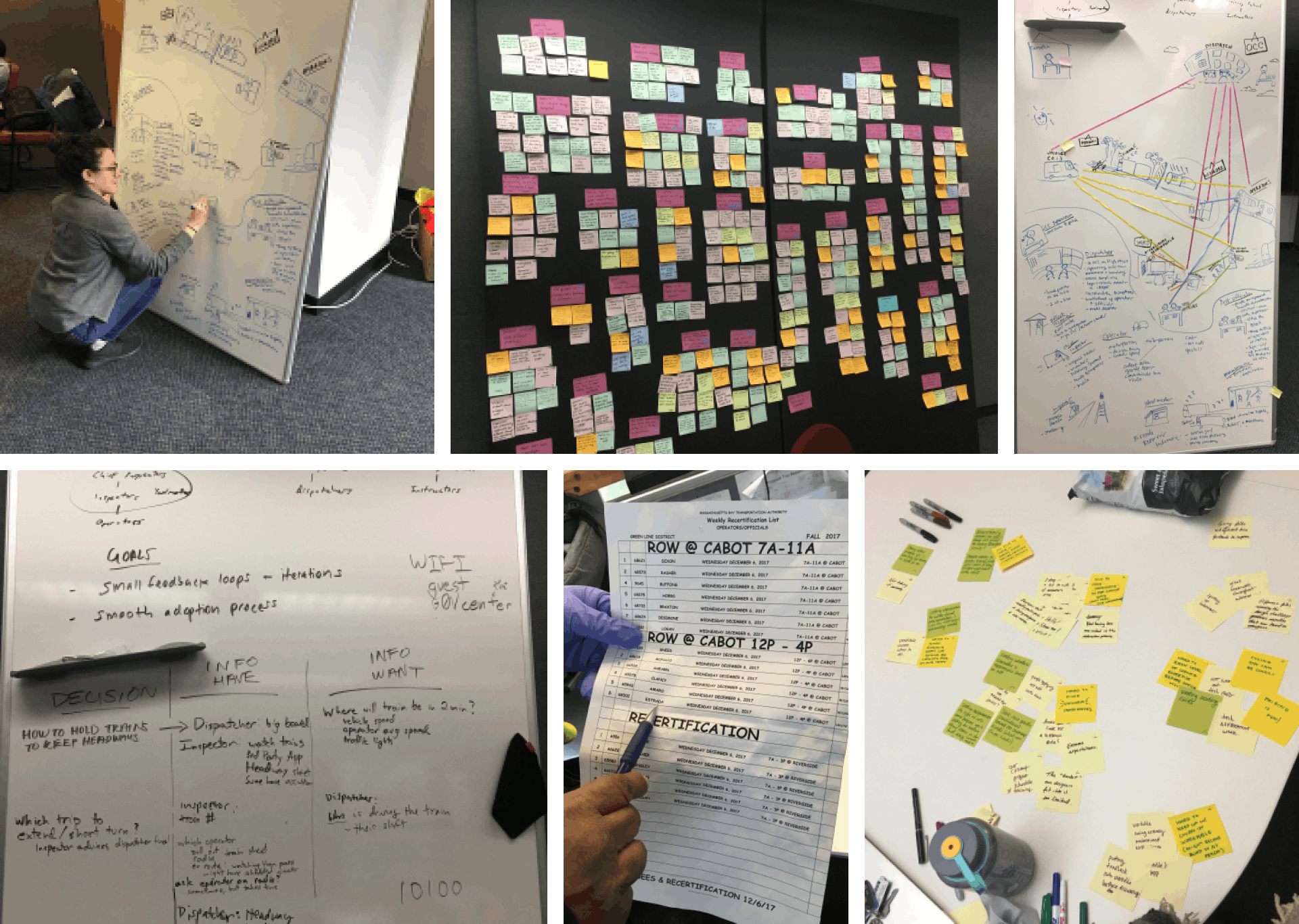
The Challenge
When the MBTA came to thoughtbot, they wanted to improve communication between officials on the Green Line.
During rush hour, there may be as many as 19 MBTA officials in the field to aid the more than 4,000 people boarding the Green Line every single day. These officials are figuring out when to send new trains into service, assigning operators to trains and scheduling their breaks, monitoring crowding at stations, and making sure trains are evenly spaced during service.
For the longest time the MBTA didn't rely on any technology to make this all work. The team would use a radio station dedicated to Green Line operations, and paper forms. As far as processes go, this was easy to learn and keep consistent but it didn't always yield consistent results. Maintaining even time between each train’s arrival is essential to the efficient operation of the Green Line. Evenly spaced trains are safer, reduce crowding, and ensure there aren’t empty trains needlessly traveling through the system.
In 2018, the MBTA's Customer Technology Department believed that they could use technology to surface real-time train data for operations to better ensure evenly spaced trains.

Discovery
thoughtbot started the project with an initial discovery phase to learn about Green Line Operations.
thoughtbot interviewed 21 MBTA officials, operators, and supervisors to get a better understanding of how the Green Line operates as a whole, across all the different positions.
The objectives for this discovery were to:
- Get a sense of the different relationships within Green Line operations.
- Evaluate manual processes could be supplemented with technology.
- Identify inefficiencies and communication gaps in their workflow.
- Understand the broader context of Green Line operations.
- Identify at what points officials need more information to perform a task more efficiently.
- Identify user needs that are unarticulated. Focus on their feelings towards a particular workflow and their motivations in certain situations.
After interviews were over, the team gathered to synthesize the new understanding from those interviews. thoughtbot and the MBTA team captured observations on sticky notes, then organized similar observations together to form over 30 different overarching insights.
In order to inform the priority of ideas, thoughtbot designers created a series of user personas to further document our findings. They aggregated the findings into seven different personas, each with their own Goals, Behaviors & Habits, Technology Access, and Relationships. Artifacts like these personas will help inform future MBTA projects. Once the team established an understanding of the different personas in the Green Line ecosystem, they revisited their overarching insights and determined that reducing radio chatter would have the greatest impact on success for all roles.

The Prototype
During a design workshop, thoughtbot and the MBTA sat down and did a series of design exercises to help us generate as many solutions as possible to solve our objective.
During that workshop, the teams converged on a final storyboard that outlined the screens of the prototype we wanted to build. The team rapidly created a low-fidelity clickable prototype, to get it in the hands of officials quickly and gain feedback to iterate on the design. After multiple rounds of showing and iterating on our prototype, the team had a clear idea of what they wanted to build for the first version of the product, an MVP.
With a plan in place, thoughtbot started designing and developing the first version of the app. Designers homed in on visual styling and user experience, while developers laid the foundation for the back-end functionality. After a few weeks, we had a real, working app!
It was initially piloted by 7 inspectors on the B and C branches of the Green Line. Once thoughtbot and the MBTA team understood that the app was useful, they expanded the pilot to all the inspectors at four stations along the Green Line. The team wanted to see if it helped the officials space trains out evenly, provide more real-time information about the Green Line to reduce radio chatter, and help the MBTA officials make better decisions about service needs.

The Outcome
In the first few weeks of widespread use, the app provided a more equitable, reliable source of information for inspectors and dispatchers.
The app ensured a consistent source of train and operator location information if the radio was needed to communicate disruptions or emergencies. The app also improved overall employee morale, inspectors loved the automatic updates to train location. The app is now in use, creating data to help the MBTA improve communications among train officials and to deliver a more reliable service to customers.



